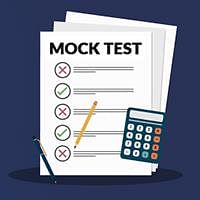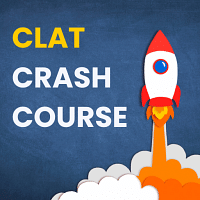CLAT Exam > CLAT Questions > The Indian delegation to the first World Conf...
Start Learning for Free
The Indian delegation to the first World Conference on Human Rights was led by
- a)Dr. Manmohan Singh
- b)Farooq Abdullah
- c)Dinesh singh
- d)Alam Khan
Correct answer is option 'A'. Can you explain this answer?
| FREE This question is part of | Download PDF Attempt this Test |
Most Upvoted Answer
The Indian delegation to the first World Conference on Human Rights wa...
The correct answer is option 'A', Dr. Manmohan Singh.
Explanation:
The first World Conference on Human Rights was held in Vienna, Austria, in 1993. It was organized by the United Nations and aimed to address various human rights issues and challenges faced by countries around the world. The Indian delegation to this conference was led by Dr. Manmohan Singh.
Dr. Manmohan Singh is an eminent economist and politician who served as the Prime Minister of India from 2004 to 2014. However, before his tenure as Prime Minister, he held various important positions in the Indian government, including the position of Finance Minister. He played a crucial role in implementing economic reforms in India during the early 1990s.
During the Vienna Conference, Dr. Manmohan Singh represented India and highlighted the country's commitment to promoting and protecting human rights. He spoke about India's efforts to ensure social justice, economic development, and inclusive growth for its citizens. Dr. Singh emphasized the importance of empowering marginalized communities and addressing issues such as poverty, gender inequality, and discrimination.
As the leader of the Indian delegation, Dr. Manmohan Singh actively participated in the discussions and negotiations during the conference. He contributed to shaping the agenda and outcomes of the conference by expressing India's concerns and perspectives on various human rights issues.
Overall, Dr. Manmohan Singh's leadership and participation in the first World Conference on Human Rights reflected India's commitment to the promotion and protection of human rights at the global level. His presence and contributions helped to highlight India's stance on important human rights issues and strengthen its engagement with the international community in this field.
Explanation:
The first World Conference on Human Rights was held in Vienna, Austria, in 1993. It was organized by the United Nations and aimed to address various human rights issues and challenges faced by countries around the world. The Indian delegation to this conference was led by Dr. Manmohan Singh.
Dr. Manmohan Singh is an eminent economist and politician who served as the Prime Minister of India from 2004 to 2014. However, before his tenure as Prime Minister, he held various important positions in the Indian government, including the position of Finance Minister. He played a crucial role in implementing economic reforms in India during the early 1990s.
During the Vienna Conference, Dr. Manmohan Singh represented India and highlighted the country's commitment to promoting and protecting human rights. He spoke about India's efforts to ensure social justice, economic development, and inclusive growth for its citizens. Dr. Singh emphasized the importance of empowering marginalized communities and addressing issues such as poverty, gender inequality, and discrimination.
As the leader of the Indian delegation, Dr. Manmohan Singh actively participated in the discussions and negotiations during the conference. He contributed to shaping the agenda and outcomes of the conference by expressing India's concerns and perspectives on various human rights issues.
Overall, Dr. Manmohan Singh's leadership and participation in the first World Conference on Human Rights reflected India's commitment to the promotion and protection of human rights at the global level. His presence and contributions helped to highlight India's stance on important human rights issues and strengthen its engagement with the international community in this field.
Attention CLAT Students!
To make sure you are not studying endlessly, EduRev has designed CLAT study material, with Structured Courses, Videos, & Test Series. Plus get personalized analysis, doubt solving and improvement plans to achieve a great score in CLAT.

|
Explore Courses for CLAT exam
|

|
Similar CLAT Doubts
The Indian delegation to the first World Conference on Human Rights was led bya)Dr. Manmohan Singhb)Farooq Abdullahc)Dinesh singhd)Alam KhanCorrect answer is option 'A'. Can you explain this answer?
Question Description
The Indian delegation to the first World Conference on Human Rights was led bya)Dr. Manmohan Singhb)Farooq Abdullahc)Dinesh singhd)Alam KhanCorrect answer is option 'A'. Can you explain this answer? for CLAT 2024 is part of CLAT preparation. The Question and answers have been prepared according to the CLAT exam syllabus. Information about The Indian delegation to the first World Conference on Human Rights was led bya)Dr. Manmohan Singhb)Farooq Abdullahc)Dinesh singhd)Alam KhanCorrect answer is option 'A'. Can you explain this answer? covers all topics & solutions for CLAT 2024 Exam. Find important definitions, questions, meanings, examples, exercises and tests below for The Indian delegation to the first World Conference on Human Rights was led bya)Dr. Manmohan Singhb)Farooq Abdullahc)Dinesh singhd)Alam KhanCorrect answer is option 'A'. Can you explain this answer?.
The Indian delegation to the first World Conference on Human Rights was led bya)Dr. Manmohan Singhb)Farooq Abdullahc)Dinesh singhd)Alam KhanCorrect answer is option 'A'. Can you explain this answer? for CLAT 2024 is part of CLAT preparation. The Question and answers have been prepared according to the CLAT exam syllabus. Information about The Indian delegation to the first World Conference on Human Rights was led bya)Dr. Manmohan Singhb)Farooq Abdullahc)Dinesh singhd)Alam KhanCorrect answer is option 'A'. Can you explain this answer? covers all topics & solutions for CLAT 2024 Exam. Find important definitions, questions, meanings, examples, exercises and tests below for The Indian delegation to the first World Conference on Human Rights was led bya)Dr. Manmohan Singhb)Farooq Abdullahc)Dinesh singhd)Alam KhanCorrect answer is option 'A'. Can you explain this answer?.
Solutions for The Indian delegation to the first World Conference on Human Rights was led bya)Dr. Manmohan Singhb)Farooq Abdullahc)Dinesh singhd)Alam KhanCorrect answer is option 'A'. Can you explain this answer? in English & in Hindi are available as part of our courses for CLAT.
Download more important topics, notes, lectures and mock test series for CLAT Exam by signing up for free.
Here you can find the meaning of The Indian delegation to the first World Conference on Human Rights was led bya)Dr. Manmohan Singhb)Farooq Abdullahc)Dinesh singhd)Alam KhanCorrect answer is option 'A'. Can you explain this answer? defined & explained in the simplest way possible. Besides giving the explanation of
The Indian delegation to the first World Conference on Human Rights was led bya)Dr. Manmohan Singhb)Farooq Abdullahc)Dinesh singhd)Alam KhanCorrect answer is option 'A'. Can you explain this answer?, a detailed solution for The Indian delegation to the first World Conference on Human Rights was led bya)Dr. Manmohan Singhb)Farooq Abdullahc)Dinesh singhd)Alam KhanCorrect answer is option 'A'. Can you explain this answer? has been provided alongside types of The Indian delegation to the first World Conference on Human Rights was led bya)Dr. Manmohan Singhb)Farooq Abdullahc)Dinesh singhd)Alam KhanCorrect answer is option 'A'. Can you explain this answer? theory, EduRev gives you an
ample number of questions to practice The Indian delegation to the first World Conference on Human Rights was led bya)Dr. Manmohan Singhb)Farooq Abdullahc)Dinesh singhd)Alam KhanCorrect answer is option 'A'. Can you explain this answer? tests, examples and also practice CLAT tests.

|
Explore Courses for CLAT exam
|

|
Suggested Free Tests
Signup for Free!
Signup to see your scores go up within 7 days! Learn & Practice with 1000+ FREE Notes, Videos & Tests.



















